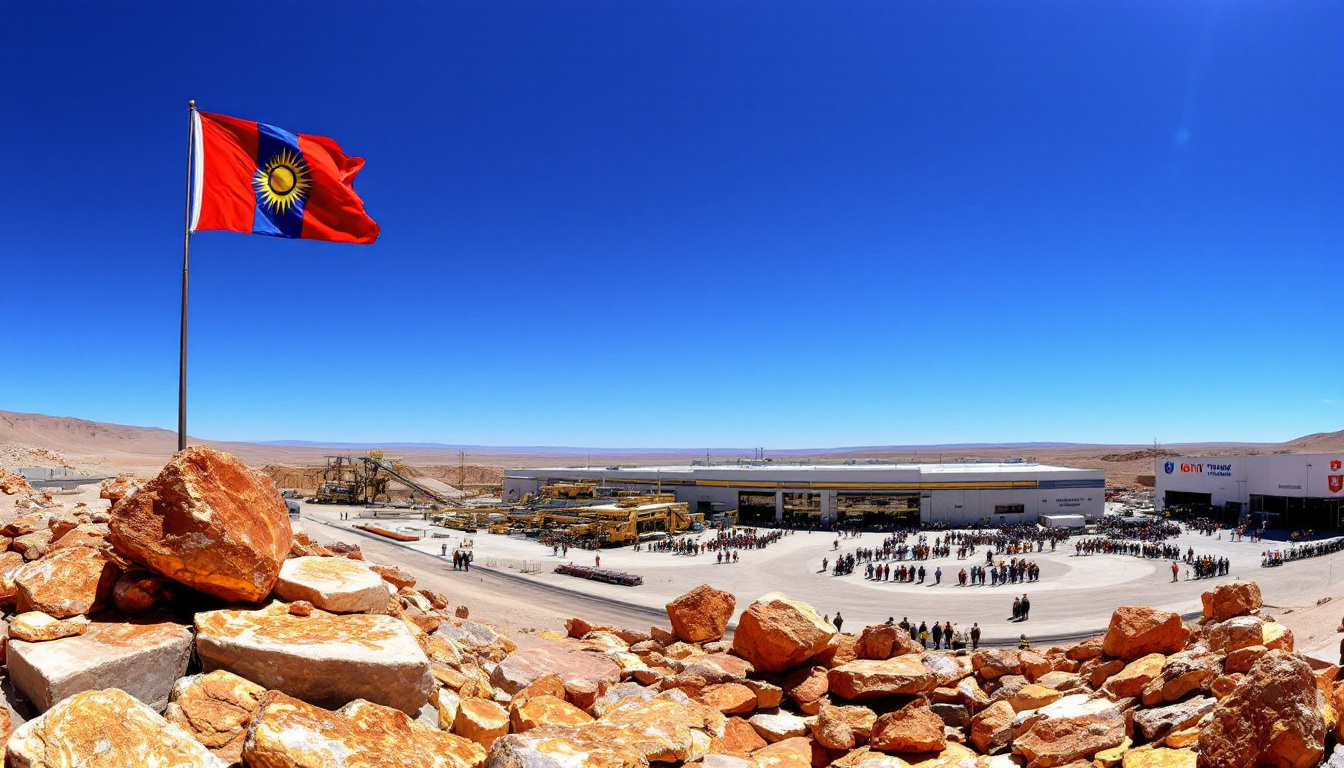What Are Trump's New Tariff Plans for 2025?
The upcoming year will see significant economic shifts as Trump's new tariff policies come into effect. Beginning April 3, 2025, a sweeping 25% tariff will be imposed on imported cars and light trucks entering the United States. This aggressive trade stance doesn't stop there—additional duties on auto parts are scheduled to follow shortly after, commencing May 3, 2025.
Perhaps most surprising to many economic analysts is the absence of exemptions for longstanding allies. Despite existing trade frameworks like the USMCA (United States-Mexico-Canada Agreement), neither Canada nor Mexico will receive carve-outs from these new tariffs, representing a dramatic departure from traditional North American trade relationships.
According to sources close to the administration, a new series of "reciprocal tariffs" are expected to be unveiled next week, further expanding the scope of this protectionist agenda. What makes this approach particularly notable is its broad application—targeting both geopolitical adversaries and traditional allies alike.
Market reactions have been swift, with U.S. stock futures pointing lower following the announcements. The Dow futures dipped 0.3%, S&P 500 futures fell 0.4%, and Nasdaq 100 futures declined 0.6%, showing immediate investor concern about rising uncertainty amid potential Trump trade policies.
How Might Trump's Tariffs Impact Inflation?
Economic experts have expressed growing fears that this aggressive trade agenda could refuel inflationary pressures just as the economy had begun to stabilize. The upcoming release of the PCE price index—the Federal Reserve's preferred inflation metric—will be critical for gauging the potential inflationary impact of these new tariffs.
Current forecasts suggest February's headline PCE is expected to match the prior month at 2.4% year-on-year and 0.3% month-on-month. However, the "core" PCE measure (which excludes volatile food and energy prices) is anticipated to accelerate slightly to 2.8% on an annualized basis.
The Federal Reserve, wary of these developments, has already demonstrated caution by keeping interest rates unchanged at its latest meeting. Fed Chair Jerome Powell specifically cited uncertainty around Trump's policy moves as a factor in this decision, though he described the wider economy as remaining in a "strong" position despite these concerns.
Historical precedent from Trump's evolving trade policies suggests tariffs can indeed drive inflation. When steel and aluminum tariffs were implemented in 2018, industries dependent on these materials saw significant cost increases. The automotive sector, which will be directly targeted by these new tariffs, represents approximately 3% of U.S. GDP, meaning price increases here could have widespread economic ripple effects.
Analysts at Vital Knowledge noted that "investors still have faith that the ultimate trade agenda won't be as grim as it seems now," explaining why markets have pared back some earlier losses following the initial tariff announcement. However, this cautious optimism could quickly erode if inflation indicators begin trending upward in response to these trade policies.
What Is Canada's Response to Trump's Tariff Threats?
Canada's reaction to these tariff announcements has been firm but measured. Prime Minister Mark Carney made it clear that "no action is off the table" in response to the U.S. tariffs, though specific countermeasures won't be rolled out until next week.
In a statement that underscores the severity of the situation, Carney pledged to "fight the U.S. tariffs with retaliatory trade actions that will have maximum impact in the United States and minimum impacts here in Canada." Perhaps most telling was his declaration that the longstanding economic and trade ties between Canada and the United States have effectively ended—a remarkable shift in diplomatic tone between these historically close allies.
The stakes for Canada are particularly high. Approximately 75% of Canadian exports go to the U.S., making its economy uniquely vulnerable to an escalating trade war. Key industries like automotive manufacturing, agriculture, and natural resources operate in deeply integrated cross-border supply chains that could face significant disruption.
Trade experts note that Canada's previous retaliatory measures during the 2018 steel and aluminum tariff dispute targeted politically sensitive U.S. sectors, including agricultural products from Republican-leaning states. A similar strategy focusing on maximum political impact rather than economic efficiency may be employed again.
How Are Financial Markets Reacting to Tariff Announcements?
Financial markets have displayed notable volatility in response to the tariff announcements. U.S. stock futures initially pointed significantly lower, with Dow futures down 0.3%, S&P 500 futures dipping 0.4%, and Nasdaq 100 futures falling 0.6%.
Perhaps the most dramatic market reaction has been in precious metals, where gold hit a record high of $3,073.52 per ounce (spot price), with futures climbing to $3,112.74/oz. This surge reflects growing safe-haven demand as investors seek protection from economic uncertainty.
Interestingly, markets have shown some resilience by paring back earlier losses following the initial shock of the tariff announcement. This partial recovery suggests that, as analysts at Vital Knowledge observed, "investors still have faith that the ultimate trade agenda won't be as grim as it seems now."
The automotive sector has been particularly affected, with both domestic and foreign automakers experiencing stock price volatility. Companies with significant import exposure face the prospect of either absorbing the 25% tariff costs or passing them onto consumers—neither option beneficial for their bottom line.
The rising price of gold indicates deteriorating risk appetite in the broader market, with investors increasingly seeking safety in traditional store-of-value assets. This pattern typically emerges during periods of economic uncertainty and geopolitical tension, both of which are currently elevated.
What's Happening with Commodity Prices?
Commodity markets have shown mixed but generally bullish trends amid the tariff news. Gold prices reached an all-time high in Asian trade, extending recent gains as investors seek safe-haven assets.
Oil prices have been easing slightly but remain on track for their third consecutive weekly gain. Brent crude futures stood at $72.99 a barrel (down 0.5%), while U.S. West Texas Intermediate crude traded at $69.62 per barrel (down 0.4%). Both oil benchmarks hit a three-week high on Tuesday, showing underlying strength despite daily fluctuations.
Most notably, crude contracts are up more than 7% since hitting multi-month lows in early March. This recovery has been supported by declining U.S. crude inventories, which indicate stronger demand amid ongoing supply concerns.
The commodity pricing environment reflects both the direct impact of tariff policies and broader geopolitical factors. Trump's threats to impose sanctions on countries purchasing Venezuelan oil and gas have added another layer of complexity to global commodity market insights, potentially constraining supply and supporting prices despite economic growth concerns.
Agricultural commodities, while not directly targeted by the announced tariffs, remain vulnerable to retaliatory measures from trading partners. Previous trade disputes saw targeted agricultural tariffs from China, Mexico, and Canada, resulting in significant price volatility for U.S. farmers.
What Other Factors Are Influencing Market Sentiment?
Beyond tariffs, several other significant factors are shaping market sentiment. Geopolitical tensions between Russia and Ukraine continue to simmer, creating uncertainty in European energy markets and global security assessments.
The breakdown in Israel-Hamas ceasefire negotiations has further heightened Middle East instability, adding to the geopolitical risk premium in oil prices and supporting safe-haven assets like gold.
U.S. threats of sanctions against countries purchasing Venezuelan oil and gas represent yet another source of market uncertainty, with potential implications for global energy supply chains and diplomatic relations throughout Latin America.
On the domestic front, declining U.S. crude inventories have provided some support for oil prices, indicating healthy consumption despite broader economic concerns. However, this positive signal is tempered by growing fears of a potential U.S. recession as higher tariffs could dampen consumer spending and business investment.
Federal Reserve policy decisions in response to PCE data and Trump tariffs in 2025 will be closely watched by market participants. The central bank faces a challenging balancing act—addressing potential tariff-induced inflation while avoiding policy tightening that could exacerbate economic slowdown risks.
FAQ: Trump's Tariffs and Economic Impact
How will Trump's tariffs affect consumer prices?
Tariffs typically function as a tax on imports that gets passed along the supply chain, ultimately reaching consumers. The 25% automotive tariffs could significantly increase prices for imported vehicles and parts, with estimates suggesting price increases between $2,000-$4,500 per vehicle, depending on origin and domestic content percentage. This direct impact could be compounded by reduced competition if foreign manufacturers reduce U.S. market presence, potentially allowing domestic producers to raise prices as well.
What industries might be most affected by the new tariffs?
The automotive sector faces the most immediate impact, affecting manufacturers, parts suppliers, dealerships, and related industries. Companies with international supply chains will experience cost increases and potential disruptions. Adjacent industries like transportation, warehousing, and retail auto parts will face secondary effects. Steel and aluminum producers might benefit from reduced import competition, while industries using these materials as inputs could face higher costs if domestic prices rise in response to tariff protection.
How might the Federal Reserve respond to tariff-induced inflation?
If tariffs cause significant inflationary pressure, the Fed might delay planned interest rate cuts or even consider rate increases to combat inflation. However, they'll carefully weigh this against potential economic slowdown risks. The Fed's dual mandate of price stability and maximum employment creates a challenging policy environment if tariffs simultaneously increase prices and reduce economic activity. Chair Powell has indicated the Fed is monitoring these developments closely while maintaining that the economy remains fundamentally strong.
Could Trump's tariffs trigger a global trade war?
With Canada already indicating retaliatory measures and no carve-outs for traditional allies, the risk of escalating trade tensions is substantial. Historical precedent from 2018-2019 suggests that trading partners typically respond with targeted countermeasures designed for maximum political impact. The absence of exemptions for allies increases the likelihood of widespread reciprocal actions rather than isolated disputes. Global supply chains optimized for decades of relatively free trade face potential restructuring costs if tariff barriers become the new normal.
What investment strategies might work in a tariff-heavy environment?
Defensive assets like gold (already at record highs) typically perform well during trade tensions due to safe-haven demand. Domestically-focused companies with minimal import exposure may outperform multinational firms. Businesses with strong pricing power can more easily pass increased costs to consumers, protecting margins. Sectors benefiting from domestic production protection (steel, aluminum) might see short-term gains, though their customers often suffer. Diversification across geographies and asset classes becomes increasingly important as correlation patterns shift during trade disruptions.
What Should Investors Watch for Next?
The upcoming PCE price index data release for February represents a critical indicator for measuring current inflation trends before tariff impacts materialize. As the Federal Reserve's preferred inflation gauge, this report will influence monetary policy decisions and market expectations for interest rate movements.
Specific Canadian retaliatory measures expected next week will provide insight into how traditional allies might respond to these tariff policies. Their targeting strategy—whether focused on politically sensitive regions or maximizing economic impact—could set the tone for other international responses.
The announcement of additional "reciprocal tariffs" from the Trump administration will further clarify the scope and scale of this trade agenda. Market sensitivity to these announcements has been high, with each new detail triggering volatility across multiple asset classes.
Federal Reserve officials' comments on inflation and tariff impacts will be closely scrutinized for policy implications. Any shift in language regarding the inflation outlook could signal changing rate expectations.
Market reactions across automotive stocks and related sectors will provide real-time assessment of expected tariff impacts. Companies with high exposure to cross-border supply chains may experience outsized volatility as investors recalibrate expectations.
Gold price movements will continue serving as a barometer for safe-haven demand amid economic and geopolitical uncertainty. The precious metal's recent record highs reflect significant market concerns about both inflationary pressures and economic stability.
Oil price trends amid supply concerns and economic uncertainty highlight the complex interplay between tariff policies, geopolitical tensions, and energy markets. Key 2025 trends in mining and finance reveal competing forces of supply constraints (supporting prices) and economic growth concerns (dampening demand), creating a volatile outlook that demands strategies for navigating volatile bond markets and other financial instruments.
Are You Prepared for the Next Market-Moving Discovery?
Stay ahead of significant market shifts in the mining and commodity sectors with real-time alerts on major mineral discoveries. Visit Discovery Alert's discoveries page to see how the proprietary Discovery IQ model has identified opportunities that led to substantial returns for early investors.




